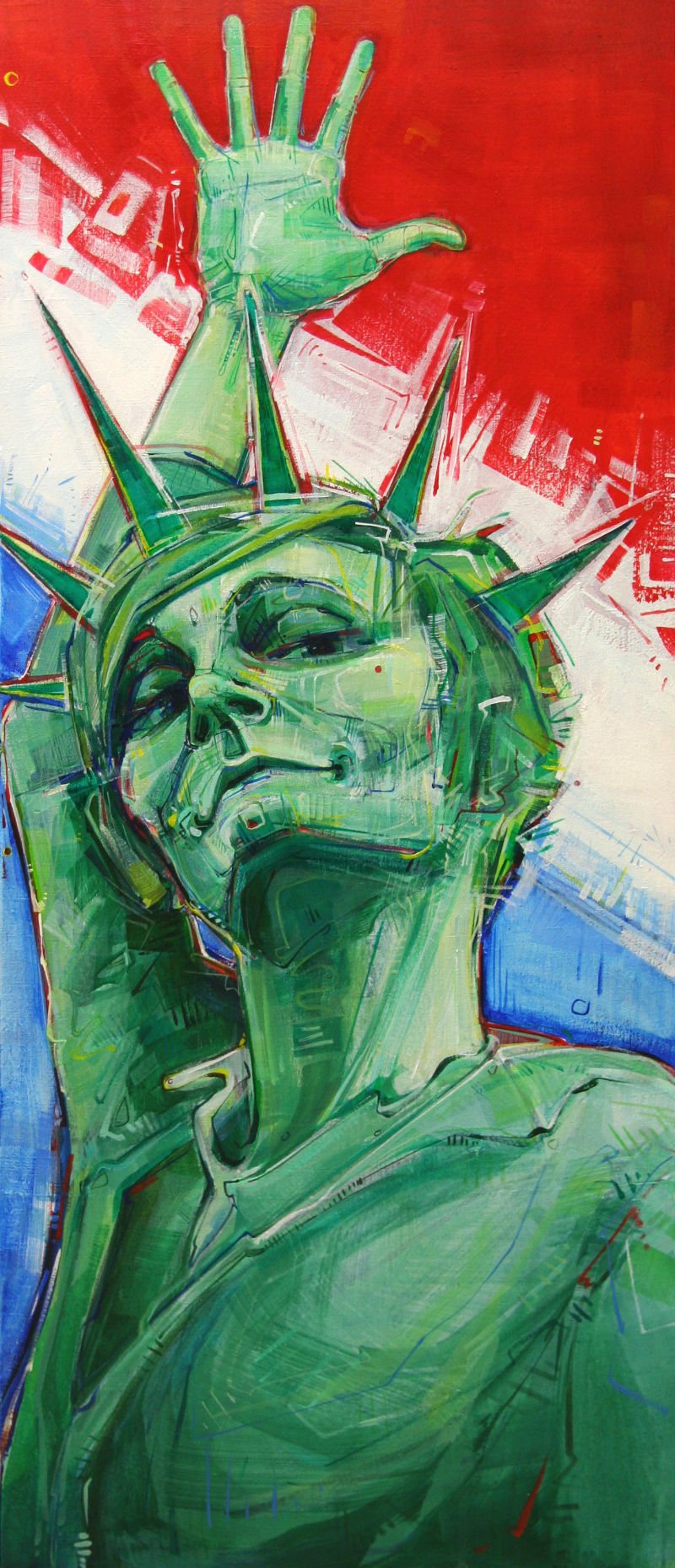Blog / 2008 / The Definition of Art
June 22, 2008
There are as many proposed definitions for art as there are artists and art-lovers in the world, but I can’t help but feel that they all refer to the one core meaning. To my mind, art is always about causing change—big or small, personal or global. That’s its value, its reason, its purpose, and its complete definition.
Of course, not everyone agrees with me. Here are some other definitions of art and why I think they all point back to revolution.
- Art is a profound human exercise or experience.
- Art is a reflection of what it is to be a human.
- Art is about appreciating what is already there but has somehow been overlooked in our everyday busy-ness.
- Art is an attempt to manifest or make material the profundity of simple human gestures, like crossing one’s legs or frowning in concentration.
- Art is meant to provide recreation or therapy for the artist.
- Art allows the artist to enjoy the satisfaction of creating something.
- Art is for relaxation.
- Art is for spreading information.
- Art is meant to educate.
- Art helps to convey the artist’s feelings to others.
- Art is meant to delight or to amuse.
- Art should be sexy or make the artist sexy.
- Art makes special.
- Art celebrates the importance of its subject. It makes the subject special since the subject is worthy of being made into art.
- The decoration or fine-crafting of an everyday object is art in that the artifact is now marked as special in the extra care that has gone into its creation.
- Art will NEVER be about causing change. The “artist as social critic” concept failed in 1937, when Picasso painted Guernica. Neither Guernica nor a million Guernica-like paintings have ever even slowed down a war for a second, let alone stopped one.
- Art is SUBJECTIVE. Please calm down.
I agree, but what makes the exercise or experience “profound” besides its ability to cause some kind of revolution?
And what is it to be human if not to be changing and growing at every moment?
So, in other words, art causes a paradigm shift? That qualifies as change in my book.
Please refer to definition and argument #3.
This means that art gives the artist something to do, which is a change from having nothing to do or from doing something else. And the goal of therapy is a change in how one sees oneself, isn’t it?
This is related to definition #5. They’re both very artist-centric and unfortunate ways of looking at art. But, again, there’s a state change from unsatisfied to satisfied, so it’s still about revolution (albeit a rather self-absorbed kind).
This definition implies that the artist wasn’t relaxed before she-he started making the work or that the audience wasn’t relaxed before viewing the piece. Going from not relaxed to relaxed is a state change.
Yes, art is a medium—a go-between—but this doesn’t explain why the artist chooses to communicate (through art or through any other means), or why the audience agrees to engage with the work and receive that information. I would argue that the artist is trying to create a change for the viewer by giving them certain information, and the viewer looks at art because she-he wants that change.
Please refer to definition #8: spreading information is educating. Learning new things always causes paradigm shifts.
Please refer to definition #8: emotions are just one kind of information.
Helping the viewer (or even the artist) go from being neutral or annoyed to being happy is changing her-his state.
The audience is more likely to engage with a sexy object or person and, therefore, to be changed by the work that has sexiness associated with it.
This is one of my favorite definitions of art, but I still don’t think it’s the root meaning of art. It comes from the anthropologist Ellen Dissanayake’s book Homo Aestheticus. It’s a two-pronged definition:
Both of these kinds of “making special” also happen to be revolutions, of sorts. If human (1), the subject that is “made special” in art feels special, and, if inanimate (2), the decorated object is reconceived by the audience, a version of definition #3. The revolution associated with the well-made object is of the most profound kind: it’s the difference between using an ugly functional thing and a beautiful one.
Okay, so maybe the revolutions that art can cause are not far-reaching. Maybe art can only function in the small picture. But is it really so wrong to try to make art that could effect more universal change?
I’m glad I get excited about things like what I see as the over-arching definition of art. And, I agree, art is subjective: it’s subjectively causing change! Art always makes revolution, but each person can word the definition whichever way she-he sees fit.
What’s your preferred way of talking about revolution?

Liberty (French-American, Self-portrait)
2007
acrylic on linen
42 x 19 inches
(Part of a series about what it meanst to be American.)
Maybe this post made you think of something you want to share with me? Or perhaps you have a question about my art? I’d love to hear from you!
To receive an email every time I publish a new article or video, sign up for my special mailing list.
If you enjoyed this post, Ko-fi allows you to donate. Every dollar you give is worth a bajillion to me!



